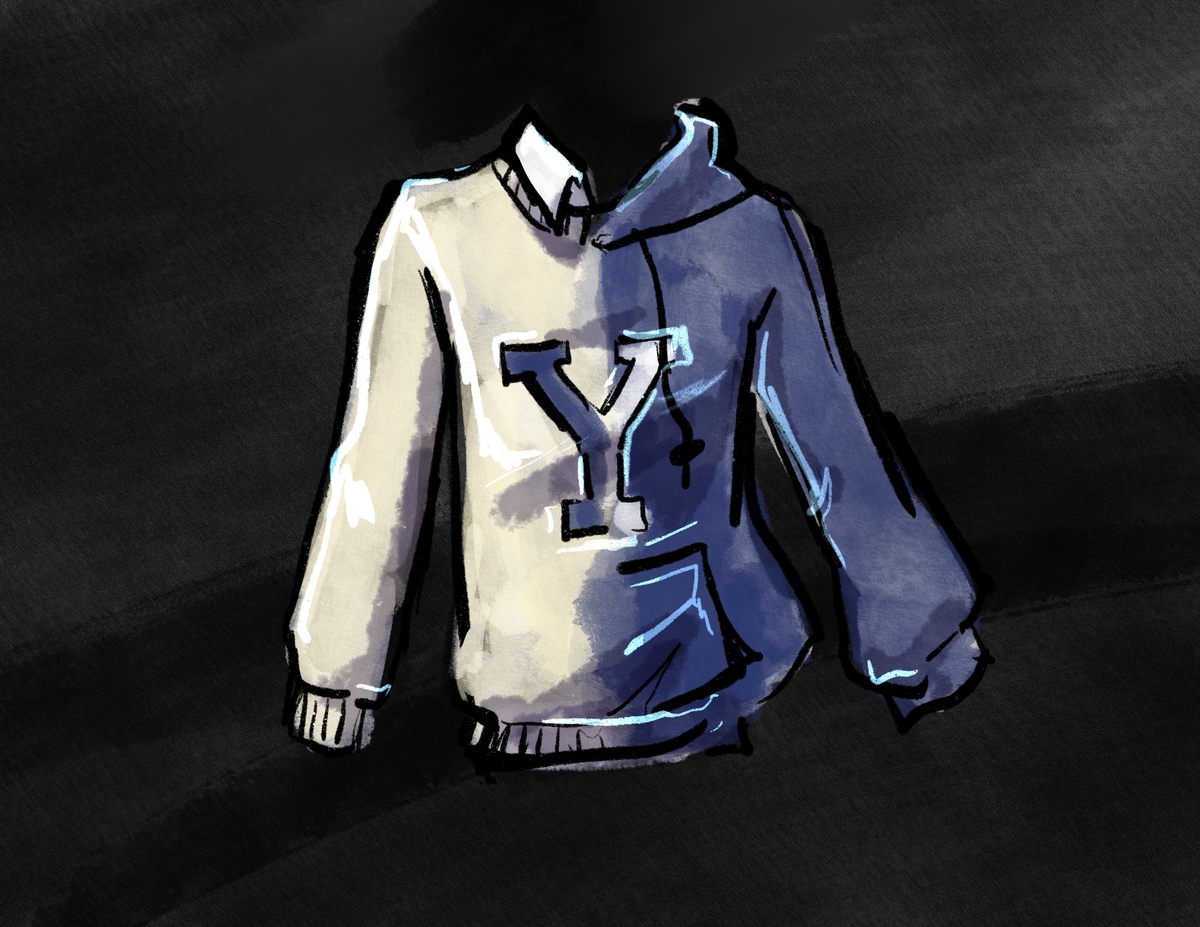Salovey talks alumni generational differences
In a conversation with the News, University President Peter Salovey described Yale’s efforts to close a generation gap widened by the growing diversity of Yale’s alumni.

Ariane de Gennaro, Illustrations Editor
Yale’s latest alumni are less connected to day-to-day happenings at the University than previous generations, according to University President Peter Salovey.
In an interview with the News, Salovey spoke about a generational split between older and younger generations of alumni. The divide is impacted by the busy hustle of young working lives and accentuated by a greater diversity of “almost any dimension you can imagine,” including family background, ethnicity and economic origin.
“[Younger alumni’s] experiences of Yale are more heterogeneous,” Salovey said. “And so it’s not that easy … to simply show up, invite people to an event and discover that everybody has a lot in common. You have to kind of figure out how to bring people with interests in common.”
For example, older alumni are likely to return to campus in “big numbers” every few years for full class reunions. But younger alumni, according to Salovey, show enthusiasm to flock to New Haven for a “greater array of motivations” than simply catching up with their class.
Executive Director of the Yale Alumni Association Weili Cheng ’77 told the News that there is not an alumni generational gap, but rather a generational difference — a phenomenon which Yale shares with other universities.
“We have found that younger alumni tend to value their individual or peer connections more than their institutional connections, in contrast to older alumni,” Cheng wrote in an email to the News.
Salovey agreed, telling the News that he thinks that millennial and Gen-Z alumni show “less attachment to institutions … including where they went to college.”
Benjamin Bartolome ’16, who serves on the Yale Alumni Association Board of Governors, agreed with Salovey’s point that there was an alumni generational divide, which he attributes to “figuring out adulthood” as well as increased diversity in recent class years. He explained how the growing heterogeneity of younger alumni could render it more difficult to increase involvement.
“There’s a little bit of a chicken and an egg problem … where we bring folks to campus, who to be honest, Yale wasn’t traditionally made for,” Bartolome said. “And understandably, many of them graduate, either tired, disaffected, that type of thing and almost need to, you know, recover and have some space from when they were a student on campus.”
As a Latinx first-generation, low-income student, Bartolome recalled that he had a “difficult time” on campus. But the fact that he had struggled himself as a student, he said, makes it all the more important that alumni from marginalized groups such as himself get involved in improving that experience for future students.
While Cheng mentioned that the five-year class reunion has among the “highest attendance” of all class reunions, Bartolome said that the work to connect alumni to campus does not stop there.
“Then, we have to kind of go the extra step of like, okay, we brought you back to campus — how do we engage you? What are you interested in? What types of programming do you want to see?” Bartolome said.
He added that programming around professional services and career development is popular among young alumni, a sentiment shared by Cheng. Bartolome added that younger alumni are also very connected to identity-related organizations on campus such as the cultural houses.
Bartolome added that it was important for those “on the younger side” to get involved in alumni outreach because, as alumni who have recently lived the student experience, they have a better sense of how to interact with the newly diversifying student body.
Stephanie Grilli GRD ’74 ’80, who also serves on the Yale Alumni Association Board of Governors, told the News that she valued the administration’s nuanced approach to the changing faces of alumni.
“I think this awareness that President Salovey has about the diversity of current students is allowing a reframing and a reexamination of the Yale experience for people from many years ago,” Grilli said. “And that’s a good thing. That’s a great thing.”
Grilli mentioned that younger alumni are more inclined to participate in more “social” events and as such, communication channels by which they can connect to the University are much different. Cheng agreed with the idea that younger alumni rely more on digital communication than older alumni.
“Younger people don’t do emails,” Grilli said. “I’ve been asking … if they will have a system by which we can text people. Just the basic way of communicating is different, and so that has to be addressed.”
But at the end of the day, Grilli does not think younger alumni are much different from their older counterparts. The goal, she said, is to establish a common thread and meaningful connections with alumni of all ages.
There are over 130,000 living Yale alumni worldwide.
Anika Seth contributed reporting.







